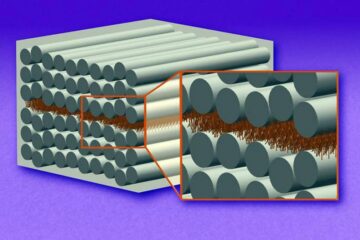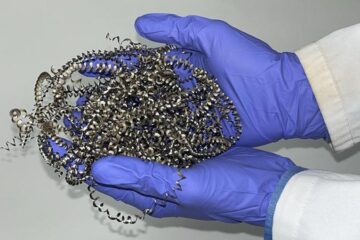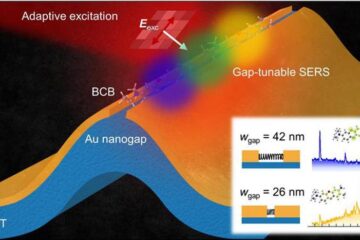Mayo Clinic develops new coma measurement system

Tool quantifies level of consciousness, severity of brain injury
Mayo Clinic neurologists have created the first new, reliable and easy-to-use clinical tool in 30 years for measuring coma depth, a proposed replacement for the Glasgow Coma Scale. The new scoring system, called the FOUR (Full Outline of UnResponsiveness) Score, will be described in the October issue of Annals of Neurology, to be published online Friday, Sept. 9.
When using the FOUR Score, evaluators assign a score of zero to four in each of four categories, including eye, motor, brain stem and respiratory function. A score of four represents normal functioning in each category, while a score of zero indicates nonfunctioning.
A coma scoring system is used by physicians to initially assess a comatose patient to determine the severity of the brain injury, to monitor the patient’s ongoing progress, and to determine the best treatment during a coma. Scores also help physicians determine whether a patient is likely to live, and if so, how disabled the patient might be upon recovery.
Eelco Wijdicks, M.D., Mayo Clinic neurologist specializing in treating patients in intensive care and inventor of the FOUR Score, says a new scoring system is imperative due to limitations of the system used most commonly, the Glasgow Coma Scale.
"There are far too many drawbacks with the Glasgow Coma Scale; it’s missing key and essential elements of a neurological exam of comatose patients," says Dr. Wijdicks. "Our new system is simple, yet more comprehensive."
Dr. Wijdicks tested the FOUR Score prospectively at Mayo Clinic in 120 intensive care unit patients and compared scores by neurologists specializing in treatment of patients in intensive care, neuroscience nurses and neurology residents to scores using the Glasgow Coma Score. He cites advantages of the FOUR Score found in this study as follows:
- Comatose patients remain fully testable even if a tube is inserted to enable breathing, which applies to almost half of all comatose patients
- Brain stem reflexes, indicators of the entire brain’s health emanating from the underside portion of the brain that controls breathing and consciousness, are tested, providing information for immediate intervention and prognosis
- More precise measurements and higher agreement between evaluators than the Glasgow Coma Scale
- Recognition of a locked-in syndrome
- Attention to stages of brain herniation and breathing as indicators of coma depth
- Scores have better correlation with outcomes, e.g., in the comatose patients with lower scores on the FOUR Score and the Glasgow Coma Scale, more patients with low FOUR Score ratings died
An accurate assessment of comatose patients is critical for the physician’s interaction with a patient’s family, explains Dr. Wijdicks.
"A coma scoring system like the FOUR Score makes better doctors," he says. "It helps the doctor know what state the patient is in, and what the prognosis is to communicate better with the family. If we only used the Glasgow Coma Scale, we would not be able to accurately explain the patient’s condition to the family — we’d just be able to give a vague explanation. With the FOUR Score, in contrast, we can in a far more detailed way provide the family information on the patient’s status and what the outcome will be."
For example, according to Dr. Wijdicks, families need to know the answers to questions such as:
- Is the patient in a locked-in state in which the patient is fully aware but cannot self-express and needs communication devices?
- Does the patient need emergency surgery?
- Should the patient be intubated to breathe properly?
- Will the patient live or die? If the patient is near death, should a full brain death exam be performed?
- Would the family want to prepare for organ donation?
- Will the patient live and be independent, performing self-care normally or with a minor disability?
- Will the patient live and be dependent, from needing part-time nursing assistance at home up to needing 24-hour care at a nursing home?
A person may become unconscious if the brain is injured through a blow to the head with an object, a motor vehicle accident, a fall or other trauma, or as a result of a disease. Someone who is totally unconscious, unresponsive and cannot be aroused over a sustained time is in a coma. This situation typically lasts only a few days or weeks. After this time, some people gradually awaken, while others enter a vegetative state or die.
"Doctors should be crystal clear about the situation patients are in," says Dr. Wijdicks. "Therefore, we’ve devised a system with the bare necessities of a neurological exam and made it so uncomplicated and understandable that anyone on the medical team can use it — a nurse, an attending physician or a physician in training."
Media Contact
All latest news from the category: Medical Engineering
The development of medical equipment, products and technical procedures is characterized by high research and development costs in a variety of fields related to the study of human medicine.
innovations-report provides informative and stimulating reports and articles on topics ranging from imaging processes, cell and tissue techniques, optical techniques, implants, orthopedic aids, clinical and medical office equipment, dialysis systems and x-ray/radiation monitoring devices to endoscopy, ultrasound, surgical techniques, and dental materials.
Newest articles

“Nanostitches” enable lighter and tougher composite materials
In research that may lead to next-generation airplanes and spacecraft, MIT engineers used carbon nanotubes to prevent cracking in multilayered composites. To save on fuel and reduce aircraft emissions, engineers…

Trash to treasure
Researchers turn metal waste into catalyst for hydrogen. Scientists have found a way to transform metal waste into a highly efficient catalyst to make hydrogen from water, a discovery that…

Real-time detection of infectious disease viruses
… by searching for molecular fingerprinting. A research team consisting of Professor Kyoung-Duck Park and Taeyoung Moon and Huitae Joo, PhD candidates, from the Department of Physics at Pohang University…





















